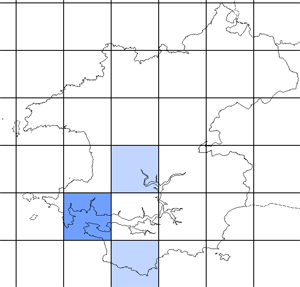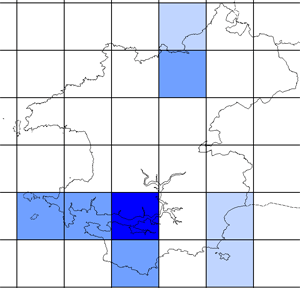Goosander - 1980s winter atlas
 Sunday, September 18, 2011 at 4:05PM
Sunday, September 18, 2011 at 4:05PM 
The BTO winter atlas showed the 10km squares where Goosanders were recorded during the winters of 1981-82, 1982-82 and 1983-84.
The darker the colour, the higher the relative total count for each 10km square. The darkest blue represents 4-10 birds seen in a day.
Graham Rees
 1980s BTO winter atlas,
1980s BTO winter atlas,  GHR,
GHR,  duck,
duck,  wildfowl in
wildfowl in  Goosander
Goosander 





